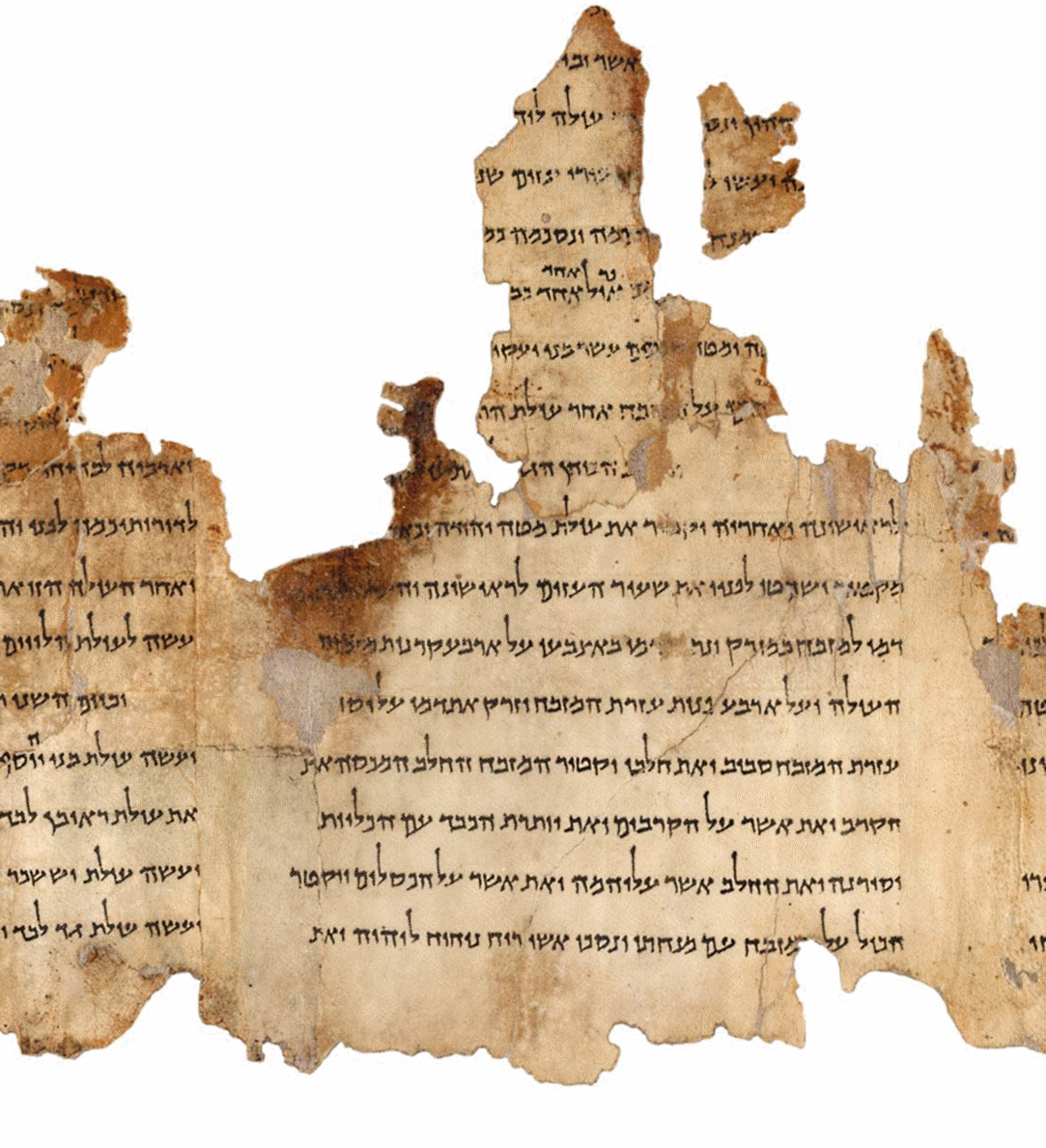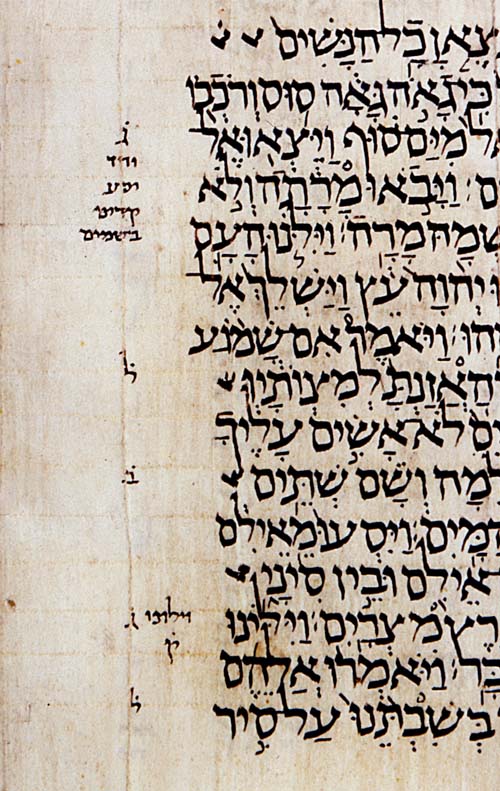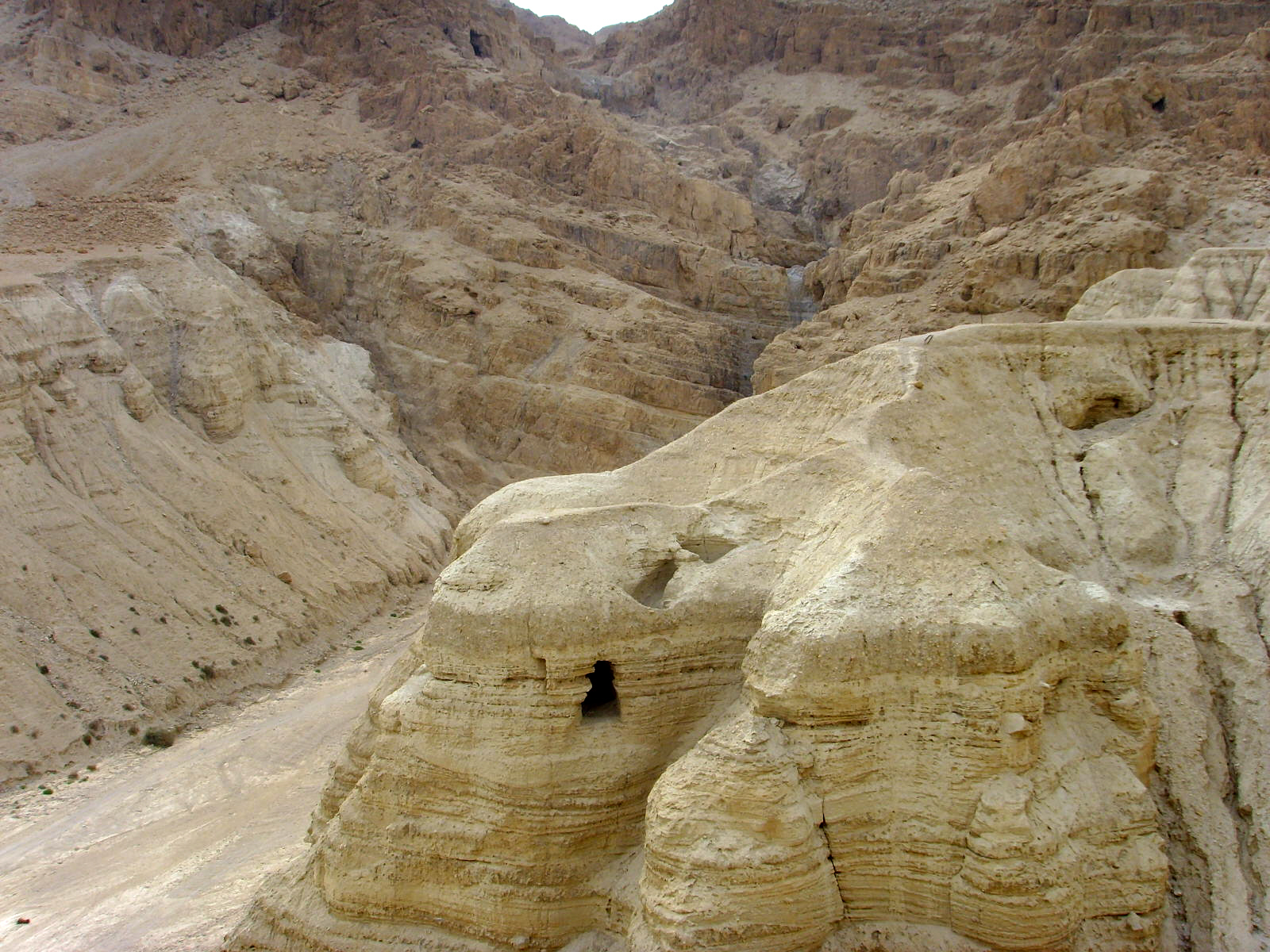|
6Q6
6Q6 is a small portion of a scroll from Cave 6 at Qumran, containing Song of Songs 1:1-7 in Hebrew. Together with three scroll portions found in Cave 4, they comprise the total witness to the Song from the Dead Sea Scrolls. It is dated to about 50 CE. See also * List of Hebrew Bible manuscripts * 4Q106 = 4QCanta * 4Q107 = 4QCantb *4Q108 = 4QCantc * Biblical manuscript *Tanakh at Qumran References External links *Emanuel Tov Emanuel Tov, ( he, עמנואל טוב; born September 15, 1941, Amsterdam, Netherlands as Menno Toff) is a Dutch Israeli, emeritus J. L. Magnes Professor of Bible Studies in the Department of Bible at the Hebrew University of Jerusalem. He has ...br>'A Categorized List of All the "Biblical Texts" Found in the Judean Desert.'''Dead Sea Discoveries'' 8 (2001): 67–84.6Q6 at the Leon Levy Dead Sea Scrolls Digital Library {{Dead Sea Scrolls Dead Sea Scrolls 1st-century BC biblical manuscripts ... [...More Info...] [...Related Items...] OR: [Wikipedia] [Google] [Baidu] |
List Of Manuscripts From Qumran Cave 6
The following is a list of the Dead Sea Scrolls from the cave 6 near Qumran. Description Wadi Qumran Cave 6 was discovered alongside Cave 5 in 1952, shortly after the discovery of Cave 4. Cave 6 contained fragments of about 31 manuscripts.VanderKam, James C., ''The Dead Sea Scrolls Today'', Grand Rapids: Eerdmans, 1994. pp. 10–11.Garcia Martinez, Florentino and Tigchelaar, Eibert. ''The Dead Sea Scrolls Study Edition''. Vol. 1. 1999.Fritzmyer, Joseph. ''A Guide to the Dead Sea Scrolls and Related Literature''. 2008. List of manuscripts Some resources for more complete information on the Dead Sea Scrolls are the book by Emanuel Tov, "Revised Lists of the Texts from the Judaean Desert" for a complete list of all of the Dead Sea Scroll texts, as well as the online webpages for the Shrine of the Book and the Leon Levy Collection, both of which present photographs and images of the scrolls and fragments themselves for closer study. Information is not always comprehensive, ... [...More Info...] [...Related Items...] OR: [Wikipedia] [Google] [Baidu] |
4Q106
4Q106 (or 4QCanta) is one large and three small fragments from three columns of a scroll containing portions of the Song of Songs (3:4-5, 7–11; 4:1–7; 6:11?-12; 7:1-7) in Hebrew.3:4... I grasped him and did no">sup>3:4... I grasped him and did no''t let him go until brought him to my mother's house, and into* he room of the woman who conceived me. 5I charge y''ou daughters f Jerusalem ...From column II can be read:''DJD'' 18: 202.Florentino García Martínez, Eibert J. C. Tigchelaar. The Dead Sea Scrolls Study Edition: 1Q1-4Q273 * From column III can be read: * ; See also * List of Hebrew Bible manuscripts * 4Q107 = 4QCantb *4Q108 = 4QCantc *6Q6 = 6QCant *Tanakh at Qumran The Dead Sea Scrolls (also the Qumran Caves Scrolls) are ancient Jewish and Hebrew religious manuscripts discovered between 1946 and 1956 at the Qumran Caves in what was then Mandatory Palestine, near Ein Feshkha in the West Bank, on the nor ... References Literature *Yardeni, Ada. ''The Book of ... [...More Info...] [...Related Items...] OR: [Wikipedia] [Google] [Baidu] |
4Q107
4Q107 ( or 4QCantb) is a fragment of the Song of Songs (2:9‑17; 3:1‑2, 5, 9‑11; 4:1‑3, 8‑11, 14‑16; 5:1) in Hebrew found in Cave 4 at Qumran in the West Bank and which comprises part of the Dead Sea Scrolls. From the palaeography (script) on the fragment it has been identified as being early-Herodian, i.e. c.30 BCE-30 CE. The scribe responsible for 4Q107 did not write 4Q108 as there are differences in writing style. Also, the lacuna in the second column of 4Q107 does not provide enough space to accommodate 4Q108. The fragments which make up the Song of Songs found at Qumran are called 4Q106, 4Q107, 4Q108, and 6Q6. The scroll 4Q240 is possibly a commentary on the Song of Songs. See also * List of Hebrew Bible manuscripts *Dead Sea Scrolls * 4Q106 *4Q108 * 4Q240 * 6Q6 *Tanakh at Qumran The Dead Sea Scrolls (also the Qumran Caves Scrolls) are ancient Jewish and Hebrew religious manuscripts discovered between 1946 and 1956 at the Qumran Caves in what was the ... [...More Info...] [...Related Items...] OR: [Wikipedia] [Google] [Baidu] |
List Of Hebrew Bible Manuscripts
A Hebrew Bible manuscript is a handwritten copy of a portion of the text of the Hebrew Bible (Tanakh) made on papyrus, parchment, or paper, and written in the Hebrew language. (Some of the Biblical text and notations may be in Aramaic.) The oldest manuscripts were written in a form of scroll, the medieval manuscripts usually were written in a form of codex. The late manuscripts written after the 9th century use the Masoretic Text. The important manuscripts are associated with Aaron ben Asher (especially Codex Leningradensis). The earliest sources (whether oral or written) of the Hebrew Bible disappeared over time, because of the fragility of media, wars, (especially the destruction of the First and Second Temples), and other intentional destructions. As a result, the lapse of time between the original manuscripts and their surviving copies is much longer than in the case of the New Testament manuscripts. The first list of the Old Testament manuscripts in Hebrew, made by Benjami ... [...More Info...] [...Related Items...] OR: [Wikipedia] [Google] [Baidu] |
4Q108
4Q108 (or 4QCantc) is a fragment containing a portion of the Song of Songs (3:7–8) in Hebrew.7Behold the seat of So">sup>7Behold the seat of So''lomon six y warriors surrounding it, from the warriors of* srael, 8all of themequipped ith sword ... Features *The Masoretic Text spells the verb of verse eight with only four letters (); 4Q108, however, contains a consonant (''vav'') representing one of the distinctive vowels () of the passive participle. *The passive construction used here — ''aḥuzi ḥereb'' (grasped of sword) — is not unique to either the Song (see Ezekiel 43:6) or to Hebrew.Y Blau, ''Leshonenu'' 18 (1950-1952): 67-81. See also * List of Hebrew Bible manuscripts *Biblical manuscript *Tanakh at Qumran The Dead Sea Scrolls (also the Qumran Caves Scrolls) are ancient Jewish and Hebrew religious manuscripts discovered between 1946 and 1956 at the Qumran Caves in what was then Mandatory Palestine, near Ein Feshkha in the West Bank, on the nor ... Reference ... [...More Info...] [...Related Items...] OR: [Wikipedia] [Google] [Baidu] |
Qumran
Qumran ( he, קומראן; ar, خربة قمران ') is an archaeological site in the West Bank managed by Israel's Qumran National Park. It is located on a dry marl plateau about from the northwestern shore of the Dead Sea, near the Israeli settlement and kibbutz of Kalya. The Hellenistic period settlement was constructed during the reign of Hasmonean leader John Hyrcanus () or somewhat later. Qumran was inhabited by a Jewish community of the late Second Temple period, which most scholars identify with the mystic sect of the Essenes; however, other groups were also suggested. It was occupied most of the time until and was destroyed by the Romans during the First Jewish-Roman War, possibly as late as 73 CE. It was later used by Jewish rebels during the Bar Kokhba Revolt. Today, the Qumran site is best known as the settlement nearest to the Qumran Caves where the Dead Sea Scrolls were hidden, caves in the sheer desert cliffs and beneath, in the marl terrace. The princ ... [...More Info...] [...Related Items...] OR: [Wikipedia] [Google] [Baidu] |
Hebrew Language
Hebrew (; ; ) is a Northwest Semitic language of the Afroasiatic language family. Historically, it is one of the spoken languages of the Israelites and their longest-surviving descendants, the Jews and Samaritans. It was largely preserved throughout history as the main liturgical language of Judaism (since the Second Temple period) and Samaritanism. Hebrew is the only Canaanite language still spoken today, and serves as the only truly successful example of a dead language that has been revived. It is also one of only two Northwest Semitic languages still in use, with the other being Aramaic. The earliest examples of written Paleo-Hebrew date back to the 10th century BCE. Nearly all of the Hebrew Bible is written in Biblical Hebrew, with much of its present form in the dialect that scholars believe flourished around the 6th century BCE, during the time of the Babylonian captivity. For this reason, Hebrew has been referred to by Jews as '' Lashon Hakodesh'' (, ) since a ... [...More Info...] [...Related Items...] OR: [Wikipedia] [Google] [Baidu] |
Dead Sea Scrolls
The Dead Sea Scrolls (also the Qumran Caves Scrolls) are ancient Jewish and Hebrew religious manuscripts discovered between 1946 and 1956 at the Qumran Caves in what was then Mandatory Palestine, near Ein Feshkha in the West Bank, on the northern shore of the Dead Sea. Dating from the 3rd century BCE to the 1st century CE, the Dead Sea Scrolls are considered to be a keystone in the history of archaeology with great historical, religious, and linguistic significance because they include the oldest surviving manuscripts of entire books later included in the biblical canons, along with deuterocanonical and extra-biblical manuscripts which preserve evidence of the diversity of religious thought in late Second Temple Judaism. At the same time they cast new light on the emergence of Christianity and of Rabbinic Judaism. Most of the scrolls are held by Israel in the Shrine of the Book at the Israel Museum, but their ownership is disputed by Jordan due to the Qumran Caves' ... [...More Info...] [...Related Items...] OR: [Wikipedia] [Google] [Baidu] |
Biblical Manuscript
A biblical manuscript is any handwritten copy of a portion of the text of the Bible. Biblical manuscripts vary in size from tiny scrolls containing individual verses of the Jewish scriptures (see ''Tefillin'') to huge polyglot codices (multi-lingual books) containing both the Hebrew Bible (Tanakh) and the New Testament, as well as extracanonical works. The study of biblical manuscripts is important because handwritten copies of books can contain errors. Textual criticism attempts to reconstruct the original text of books, especially those published prior to the invention of the printing press. Hebrew Bible (or Tanakh) manuscripts The Aleppo Codex (c. 920 CE) and Leningrad Codex (c. 1008 CE) were once the oldest known manuscripts of the Tanakh in Hebrew. In 1947, the finding of the Dead Sea scrolls at Qumran pushed the manuscript history of the Tanakh back a millennium from such codices. Before this discovery, the earliest extant manuscripts of the Old Testament were in Greek ... [...More Info...] [...Related Items...] OR: [Wikipedia] [Google] [Baidu] |
Tanakh At Qumran
The Dead Sea Scrolls (also the Qumran Caves Scrolls) are ancient Jewish and Hebrew religious manuscripts discovered between 1946 and 1956 at the Qumran Caves in what was then Mandatory Palestine, near Ein Feshkha in the West Bank, on the northern shore of the Dead Sea. Dating from the 3rd century BCE to the 1st century CE, the Dead Sea Scrolls are considered to be a keystone in the history of archaeology with great historical, religious, and linguistic significance because they include the oldest surviving manuscripts of entire books later included in the biblical canons, along with deuterocanonical and extra-biblical manuscripts which preserve evidence of the diversity of religious thought in late Second Temple Judaism. At the same time they cast new light on the emergence of Christianity and of Rabbinic Judaism. Most of the scrolls are held by Israel in the Shrine of the Book at the Israel Museum, but their ownership is disputed by Jordan due to the Qumran Caves' history: f ... [...More Info...] [...Related Items...] OR: [Wikipedia] [Google] [Baidu] |
Emanuel Tov
Emanuel Tov, ( he, עמנואל טוב; born September 15, 1941, Amsterdam, Netherlands as Menno Toff) is a Dutch Israeli, emeritus J. L. Magnes Professor of Bible Studies in the Department of Bible at the Hebrew University of Jerusalem. He has been intimately involved with the Dead Sea Scrolls for many decades, and from 1991, he was appointed Editor-in-Chief of the Dead Sea Scrolls Publication Project. Biography Emanuel Tov was born in Amsterdam, the Netherlands on September 15, 1941, during the German occupation. During the Holocaust, when Tov was one year old, his parents Juda (Jo) Toff and Toos Neeter were deported to concentration camps, and they entrusted him to the care of his uncle Juda Koekoek and aunt Elisabeth Koekoek-Toff, a Christian family, and following the war he grew up with his uncle and aunt as one of their children. From age 14, he was active in the Zionistic youth movement Habonim and served as one of its leaders. At age 18, the movement motivated him to ... [...More Info...] [...Related Items...] OR: [Wikipedia] [Google] [Baidu] |





.jpg)
